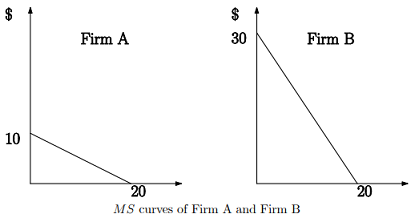ENVIRONMENTAL ECONOMICS PROJECT - Environmental Regulation and Policies
Exercise 1: Academic Paper
Consider the two academic papers on the course website which you can find under the link "Project 2". If your student number ends on an even number, you are assigned: "Do Greens Drive Hummers or Hybrids?"; if your student number ends on an odd number, you are assigned: "Information As Regulation".
Read your assigned paper carefully and then summarize the paper in your own words in the following format: one page; single-space; font-size: 12; font-style: Arial. Your summary may be guided by the following questions:
What is the main topic of your paper?
What are the questions asked by the author(s)?
Why are these questions interesting and important?
How do the author(s) address these questions, i.e. which methodology is used?
What are the main findings, conclusions or thesis of your paper?
Are there other academic papers on the same topic mentioned in your paper?
What is your opinion about the paper?
Exercise 2: Emissions Trading I
Two identical firms save money from polluting. A firm's marginal savings from emitting an amount e are given by 20 - 3e.
a. If firm 1 is given two emission permits and firm 2 is given four emission permits and they are allowed to trade, how many permits will each firm end up with and what will be the permit price in equilibrium?
b. If instead each firm is given two pollution permits and trading takes place, how much will each firm end up emitting and what will be the permit price in equilibrium?
c. Compare the permit prices in equilibrium in (a) and (b) and explain the intuition.
Exercise 3: Emissions Trading II
The two firms shown below both emit carbon dioxide residuals into the atmosphere. Their respective Marginal Savings (MS) from pollution are shown below. Both firms have been given 15 tradable carbon permits that allow them to emit 15 tons of carbon dioxide each.

a. Determine the individual MS functions for these two firms.
b. Initially, each firm must use its 15 permits to reduce its emissions and they are not allowed to trade carbon permits. Illustrate the reduction each firm will make in carbon emissions. How much will each firm pay for abatement?
c. Suppose the two firms are now allowed to trade (buy and sell) carbon permits. Which firm will buy permits and which firm will sell permits and how many permits will be traded between the firms? Why will they take this action?
d. What will be the equilibrium permit price in this market?
Exercise 4: Regulation with unknown Control Costs
Suppose the total cost of controlling the pollution in Toronto is given by T C = (3 + r)q2, where q is the amount of emissions controlled. Uncontrolled, there would be 2 units of emissions in Toronto (e.g. 2 bn tons of CO2). Thus q = 2 - e, where e is emissions. The variable r is unknown to the government of Ontario which wants to regulate the emissions in Toronto. All they know is that it could take the value of either r = 0 or r = 4 with equal likelihood. Marginal damage from emissions is given by MD(e) = 4e.
a. Write the total cost of pollution control in terms of e. Graph this total cost as a function of e.
b. In this model, what could r stand for? Could you come up with some examples? Please explain.
c. Graph the marginal damages from emissions and the expected value (i.e., average over the two possible rs) of the marginal savings from emissions. Be as accurate as you can.
d. What level of emission fee or emission permit should be chosen, not knowing what value r will take? Show your answer on the graph.
e. Suppose after you have set the fee or permit in part (d) it turns out that r = 4. Show the deadweight loss from the permit and fee, assuming these instruments cannot be changed. Which instrument appears to be better?